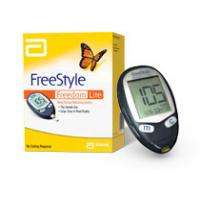
Warning Signs of Pre-DiabetesWarning Signs of Pre-Diabetes
  © Noipornpan | Dreamstime.com Learning from your doctor that you have prediabetes is not exactly what you want to hear. But although this diagnosis means that type 2 diabetes is looming on the horizon, you can still take measures to delay the disease or even stop it from happening. However, you should not delay your actions. If you have been diagnosed with prediabetes, it means that your blood glucose level (blood sugar level) is higher than it should normally be, but not as high as in type 2 diabetes, with which prediabetes shares its main characteristic – the inability of the body cells to properly absorb insulin that eventually makes your body insulin resistant. Insulin is a hormone produced by pancreas that your body needs to help glucose (sugar) get from your blood into your body’s cells to make energy. If not enough glucose gets from your blood into your body’s cells, the cells cannot produce enough energy for proper functioning. At the same time, glucose that is unable to pass into your body cells gets accumulated in the blood, which leads to high blood sugar. The longer blood sugar level remains higher than normal, the more potential health issues can arise. Among the problems caused by diabetes are blood vessel damage, high blood pressure, heart disease, vision problems, damage to the digestive system, and fertility problems in men and women. Diabetes can also cause serious metabolic conditions such as diabetic ketoacidosis (DKA) and hyperosmolar hyperglycemic state (HHS) and affect the body’s ability to heal wounds and infection. Naturally, the sooner prediabetes is diagnosed, the higher the chances to avoid type 2 diabetes from developing in your body, but the truth is, it is hard to recognize prediabetes because its signs and symptoms can be too mild to notice. Nevertheless, the symptoms of type 2 diabetes can appear in prediabetes as well, including increased hunger and thirst, frequent urination, fatigue, and unexplained weight loss. Although those symptoms can be mild enough to disregard, it is in your best interest to see the doctor and check your blood sugar right away if you notice any sign of them. Besides, there is a number of risk factors that may contribute to developing prediabetes. The prediabetes risk factors include: having family history of diabetes, having little or no physical activity, being overweight or obese, having a history of heart disease or stroke, being a smoker, having high blood pressure, having obstructive sleep apnea, being 45 years of age or older, having a high level of triglycerides or a low level of “good” (HDL) cholesterol, having polycystic ovary syndrome, and having a history of gestational diabetes. Even if you don’t have any prediabetes or type 2 diabetes symptoms, but one or more of the risk factors apply to you, your doctor may suggest to test your blood sugar level by either Fasting Plasma Glucose test (FPG) that is taken in the morning, after overnight fasting (for at least 8 hours) or by Oral Glucose Tolerance Test (OGTT) that is also done after 8 hours of fasting, after which blood sugar is measured two hours after you drink 75 grams of glucose. It is common practice for people with prediabetes risk factors to have their blood sugar tested every three years. In some cases, people with prediabetes do not take their condition as serious as they should because they do not experience symptoms and warning signs as strong as those caused by type 2 diabetes. However, without proper care, the disease silently takes its course towards much more serious and even life-threatening outcomes of type 2 diabetes. But if you take the right steps to control your blood sugar level, you most likely will be able to stop the disease in its track and live long, happy, diabetes-free life.
| |||||||||||||||||||||||||




























